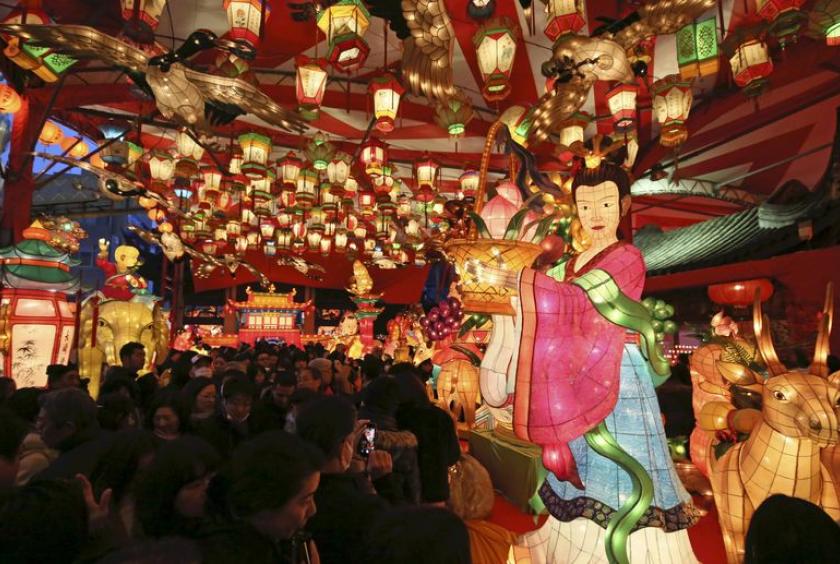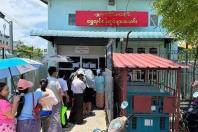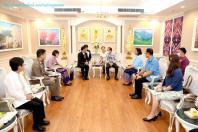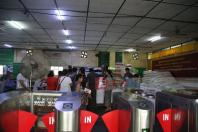Traditional festivals in many parts of the nation have joined forces with popular manga and anime products to lend new charm to their events.
The Nagasaki Lantern Festival scheduled to be held in Nagasaki in February is applying this strategy for the first time this year, tying up with the popular anime series “Kingdom.” Organizers are hoping to attract subculture fans to the festival and boost its name recognition.
The festival celebrates Shunsetsu, the Chinese Lunar New Year, by displaying a large number of colorful Chinese lanterns. About 1 million people attend each year. This year’s festival marks the 26th edition of the event, and will be held from Feb. 5 to 19.
Its TV anime partner “Kingdom” is set in China, stretching from the Spring and Autumn period to the Warring States period. The story depicts the life and growth of a boy who dreams of becoming a famous military general, and of a young king who later becomes the first emperor of the Qin dynasty.
The manga series on which the anime is based has been carried in Shukan Young Jump weekly magazine, and a total of 36 million independent comic books have also been published.
A live-action movie based on the manga series will be released in movie theaters in April.
The collaboration was proposed by Nagasaki Seinen Kyokai, an association of young business owners in and around the city. The upcoming festival will feature such items as a three-meter-high lantern bearing illustrations from “Kingdom,” and costumes and props used in the movie.
The organizers also plan to let visitors enjoy a tour of life-size panels of the anime’s characters placed in festival venues in the city, during which they will receive goods related to “Kingdom.” They have enthusiastically promoted the collaboration, and fans of the original manga are already enthusiastic, saying it sounds like a heavenly event.
“Nagasaki’s strong connection with China makes this collaboration possible. I want to increase the lantern festival’s name recognition all over the nation,” said Yukihito Akagi, 34, an association member who proposed the joint plan.
An official in charge of the festival in the city government’s tourism promotion section also voiced hopes for the tie-up, saying: “Challenges are necessary to make the festival a long-lived event. We also want to utilize the collaboration to increase the number of visitors on weekdays.”
In another case, the Mito city government has formed a collaboration project connecting Mito no Ume Matsuri festival with a social networking game.
Since fiscal 2015, when the traditional festival marked its 120th edition, the maker of “Touken-Ranbu” game software, the Tokugawa Museum and the city government have jointly planned features of the festival. The game features characters based on famous Japanese swords.
The collaboration was undertaken because the museum stores a famous Japanese sword named “Shokudaikiri Mitsutada,” and a character with the same name appears in the game.
Last year, in addition to a stamp-collection tour in the city, cafes in Mito served drinks and dishes inspired by images of the game characters. During the festival period, a survey was conducted on 3,000 people. It found that visitors had come from eight countries, mainly in Asia.
Last year saw a new collaborative project in Gifu. The Gifu Nobunaga Matsuri festival commemorating the famous warlord Oda Nobunaga was held in October, in cooperation with the TV anime series “Nobunaga no Shinobi” (Ninja of Nobunaga).
“There are many festivals that have preserved old ways and traditional skills, and introduced new endeavors as well. In this context, I can say that manga and anime products that can be accepted worldwide are very good features,” said Tomoyuki Omote, a research fellow at the Kitakyushu Manga Museum.
But he added, “This means that the appearance of a festival changes from its original form. Organizers should make such efforts while understanding that perception gaps can occur between the festival’s supporters and visitors.”










